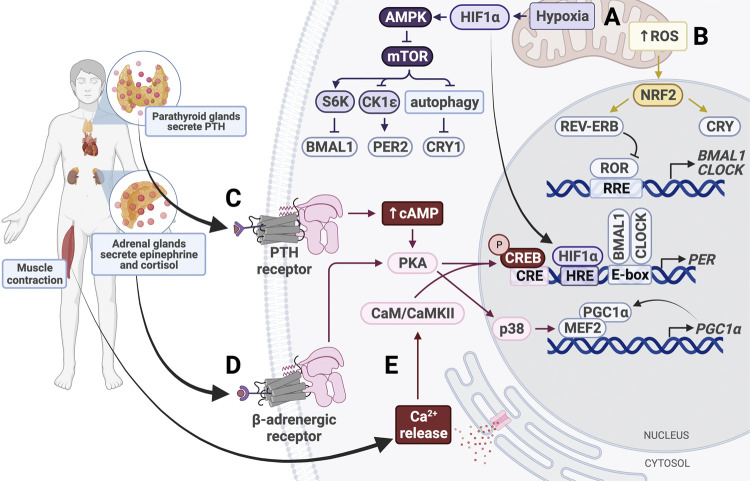FIGURE 5.
Entrainment of peripheral clocks by physical activity. (A) Hypoxic conditions activate HIF1α and AMPK, which inhibits mTOR activity. HIF1α binds the HIF response element (HRE) in PER1/2 promoters to increase gene expression. (B) Increased intracellular levels of reactive oxygen species (ROS) activate NRF2, which subsequently activates CRY and REV-ERB. (C) Parathyroid hormone (PTH) binds the PTH receptor to activate the cAMP/Ca2+-CREB signaling cascade. Phosphorylated CREB binds the cAMP response element (CRE) in the PER promoter, thereby upregulating PER expression. (D) Secreted epinephrine binds the β-adrenergic receptor, which activates protein kinase A (PKA). PKA activates CREB and p38 to alter clock gene expression. p38 triggers activation of the MEF2/PGC1α positive feedback loop. (E) Muscle contraction triggers intracellular calcium release, which activates calmodulin (CaM) and calmodulin-dependent kinase II (CaMKII). CaM/CaMKII activate CREB, which upregulates PER1/2 expression.

